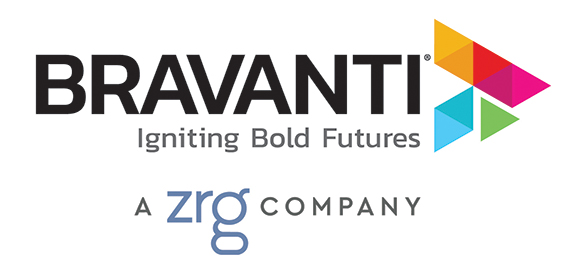By Emily Reynolds, former Managing Director, Outplacement & Career Transition Services, Bravanti and Gwen MacKenzie, Of Counsel, Quick Leonard Kieffer
The COVID-19 crisis is no doubt one of the largest public health crises our modern world has ever seen. As it continues to strain our healthcare system, we are only just beginning to see the wide-reaching implications for healthcare organizations, their leaders, and their people.
Even before the virus outbreak, there were a number of factors contributing to uncertainty and consolidation in the healthcare marketplace. Fluid policy shifts in Washington continue to change payer-provider relationships, significantly increasing regulatory pressures.
Combined with a public health crisis, even short-term strategy and business planning are difficult in such an uncertain environment. Facing the profound impacts of these challenges, it is no surprise that some healthcare leaders are evaluating their options for restructurings or reductions in force.
Of course, these things have a cost other than bottom-line expenses: the cost to human capital. In these times, it is critical to take stock of the impact dramatic change has on the people involved and to have a plan in place should your organization need to make some tough decisions.
Here are six considerations for helping your healthcare staff during times of change:
Develop a Change Management Plan
Bravanti research shows that an early, tightly organized plan generates quicker and better results. It is essential to develop a comprehensive change management plan to minimize risk and maximize outcome and engagement.
A well-conceived strategy will include transparent communications, detailed redeployment or separation plans, and action plans for multi-location efforts. Managers should be trained in how to handle the emotions that can arise in these scenarios, and employees should not have to navigate the change alone.
With a well-planned transition process, healthcare staff who are being redeployed or laid off can move forward in a positive direction more quickly and with solid support.
Address Redeployment
Oftentimes, especially in the case of reengineering or restructuring, some employees can be reassigned within the organization.
Think about both the current state of the organization and the “target” state. Where is the organization headed? What skill sets are required to achieve the target state, and does existing talent match up, or are there gaps? How can the organization both retain good talent and provide alternative opportunities for those employees that are directly affected?
Support for Exiting Employees
When separation is necessary, early and sustained support of outgoing employees will help them move forward optimistically. Be clear about timeframes and expectations, while using a caring and considerate tone in communications. Make sure those affected know what’s available to them in terms of outplacement and career support. Consider using an experienced outplacement firm for on-site job-reduction notifications and job-search assistance.
Outplacement services can take many forms, but at the core outplacement is working with a dedicated, experienced, and effective career coach who will help the job seeker define the right path forward. This includes gaining a clear understanding of professional and personal goals and how skills match up with opportunities in the marketplace.
In the healthcare field, non-compete agreements often surface as a critical issue in career transition. Some employers will be flexible as to the enforcement of these agreements, especially if the candidate’s target company is not a direct competitor.
A good career coach can guide the candidate on how to work within the terms of the non-compete while evaluating how skills and experiences can transfer to other roles. For some employees, the time might be right to change careers, start a business, transition to part-time work, or prepare for a new chapter.
Communicate Clearly
The importance of strong communications cannot be overstated, especially in a force-reduction scenario. Outgoing employees deserve information in a timely and accurate way, with a clear and honest explanation.
Management should detail the business reasons for the change in a compassionate and respectful way, and remain available for discussion and questions. A two-way flow of communication is best, giving both exiting and remaining employees information early and often, and allowing them to provide feedback to management.
Motivate the Remaining Team
Chances are good that the transition will have a profound effect on everyone in the organization, and it is important to nurture the employees who stay and maximize their engagement. Here again, communication is key.
Company leaders should acknowledge the impact of the changes and the emotions involved. Demonstrate the vision for the new organization, and how the losses or changes will be offset by a new culture and work environment.
Use every opportunity to learn how the changes are impacting the remaining team, and adjust plans along the way to ensure they remain positive and engaged.
Provide High-Touch Help for Senior Executives
Separated senior executives need a high-touch approach in the form of an experienced transition coach to guide them in the discernment process for the next right career move.
They will likely need sophisticated support in researching companies and opportunities, networking and securing strategic introductions, taking and evaluating skills and aptitudes assessments, developing a personal brand strategy, launching a new career strategy, vetting opportunities, and negotiating offers. Like other employees, this may be a time for senior executives to consider entrepreneurial or second-act possibilities such as corporate board work, volunteer activities, or not-for-profit leadership.
Supporting Your Healthcare Staff During Times of Change
Change is rarely easy. And we can continue to expect more as the current crisis unfolds and healthcare continues to transform. When downsizing comes, a positive career transition experience can mean all the difference, not only for the affected employees, but for any company seeking to combat fierce competitive forces in the marketplace and evolve into a better organization.
The right approach can facilitate a good parting feeling about the company among exiting employees, foster a more upbeat attitude among those who remain, and reinforce a positive brand reputation both inside and outside the company.
Content Related to My Resume is Done – Now What? Slice Up the Job Searching Activity Pie
Next Act: Solutions for Post-Pandemic Outplacement
So, What Are Outplacement Services, Exactly?
Momentum: Outplacement and Career Transition Video Series
When “Shelter in Job” Isn’t an Option, Outplacement Services Bridge the Gap

